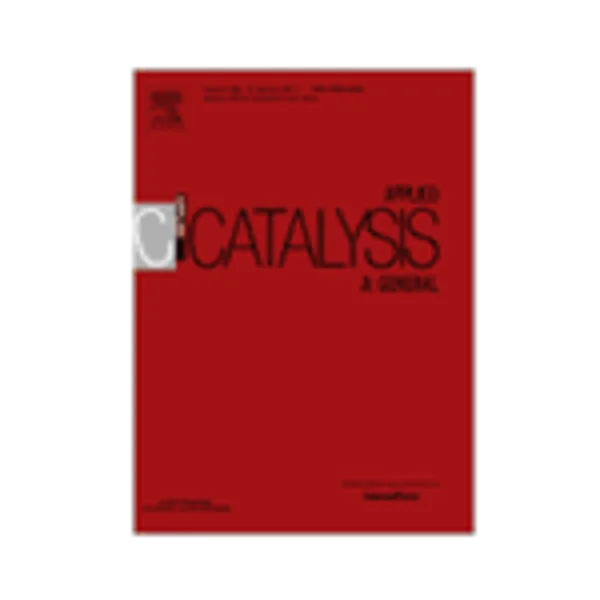-
inactivation path during the copper (ii) catalyzed synthesis of questiomycin a from oxidation of 2-aminophenol
جزئیات بیشتر مقاله- تاریخ ارائه: 1392/07/24
- تاریخ انتشار در تی پی بین: 1392/07/24
- تعداد بازدید: 1120
- تعداد پرسش و پاسخ ها: 0
- شماره تماس دبیرخانه رویداد: -
the catalytic oxidation of 2-aminophenol (oap) to 2-amino-3h–phenoxazin-3-one (apx, questiomycin a) was the object of numerous studies partly due to antimicrobial properties of questiomycin a and mostly because it can be used as a model for the synthesis of the naturally occurring antineoplastic agent actinomycin d. several copper complexes were used as dioxygen and/or substrates activators in order to mimic the activity of phenoxazinone synthase, but the reported assays failed to provide reasonable mechanistic features in media compatible with natural conditions. the main purposes of our work were to use simple copper salts to perform oxidation of oap in oxygenated aqueous solutions and to develop a reaction scheme able to explain the low yields in apx along with the operational inactivation of the catalyst. a 11-step kinetic model able to describe the inactivation of copper(ii) catalyst during oxidation of oap to apx in oxygenated solutions was developed, and the rate constants for both catalytic and non-catalytic branch were estimated either experimentally or using a computing program for detailed kinetic simulation. it was demonstrated that the inactivation path can be assigned to formation of the stable bis(o-iminosemiquinonato)copper(ii) complex, a compound reported as a moderate antimicrobial agent.
مقالات جدیدترین رویدادها
-
استفاده از تحلیل اهمیت-عملکرد در ارائه الگوی مدیریت خلاقیت سازمانی و ارائه راهکار جهت بهبود
-
بررسی تاثیر ارزش وجوه نقد مازاد بر ساختار سرمایه شرکت های پذیرفته شده در بورس اوراق بهادار تهران
-
بررسی تأثیر سطح افشای ریسک بر قرارداد بدهی شرکت های پذیرفته شده در بورس اوراق بهادار تهران
-
بررسی تأثیر رتبه بندی اعتباری مبتنی بر مدل امتیاز بازار نوظهور بر نقد شوندگی سهام با تأکید بر خصوصی سازی شرکت ها
-
تأثیر آمیخته بازاریابی پوشاک ایرانی بر تصویر ذهنی مشتری پوشاک ایرانی (هاکوپیان)
-
آزمون و اعتبارمدل هوش هیجانی با سازگاری اجتماعی دانش آموزان مقطع متوسطه دوره دوم بندرعباس
-
رابطه رضایت زناشویی، خودکارآمدی و سلامت عمومی با رضایت شغلی کارمندان بانک ملی شهر اهواز
-
اصول اعطای کاربری مجدد به بناها و بافت های تاریخی مبتنی برافزایش کیفی فضاهای اجتماعی
-
بررسی رابطه بین مالکیت نهادی و پایداری سود در شرکت های پذیرفته شده در بورس اوراق بهادار تهران
-
on the role of transition region on the alfvén wave phase mixing in solar spicules
مقالات جدیدترین ژورنال ها
-
مدیریت و بررسی افسردگی دانش آموزان دختر مقطع متوسطه دوم در دروان کرونا در شهرستان دزفول
-
مدیریت و بررسی خرد سیاسی در اندیشه ی فردوسی در ادب ایران
-
واکاوی و مدیریت توصیفی قلمدان(جاکلیدی)ضریح در موزه آستان قدس رضوی
-
بررسی تاثیر خلاقیت، دانش و انگیزه کارکنان بر پیشنهادات نوآورانه کارکنان ( مورد مطالعه: هتل های 3 و 4 ستاره استان کرمان)
-
بررسی تاثیر کیفیت سیستم های اطلاعاتی بر تصمیم گیری موفق در شرکتهای تولیدی استان اصفهان (مورد مطالعه: مدیران شرکتهای تولیدی استان اصفهان)
-
بررسی قرار گرفتن در معرض جنگ در دوران کودکی و تاثیر آن بر ریسک پذیری مالی در بزرگسالی
-
بررسی تأثیر ادراک کارکنان از عدالت سازمانی بر اعتماد سازمانی در اداره امور مالیاتی استان همدان
-
بررسی جزایی ابعاد و ارکان جرم کلاه برداری رایانه ای
-
بررسی رابطه بین هوش هیجانی و سبک رهبری تحول آفرین در بین مربیان ورزشی زن استان مرکزی
-
بررسی عوامل روانشناختی، هیجانی، کنش های مغزی و عصبی بر رفتار سرمایه گذاران




سوال خود را در مورد این مقاله مطرح نمایید :